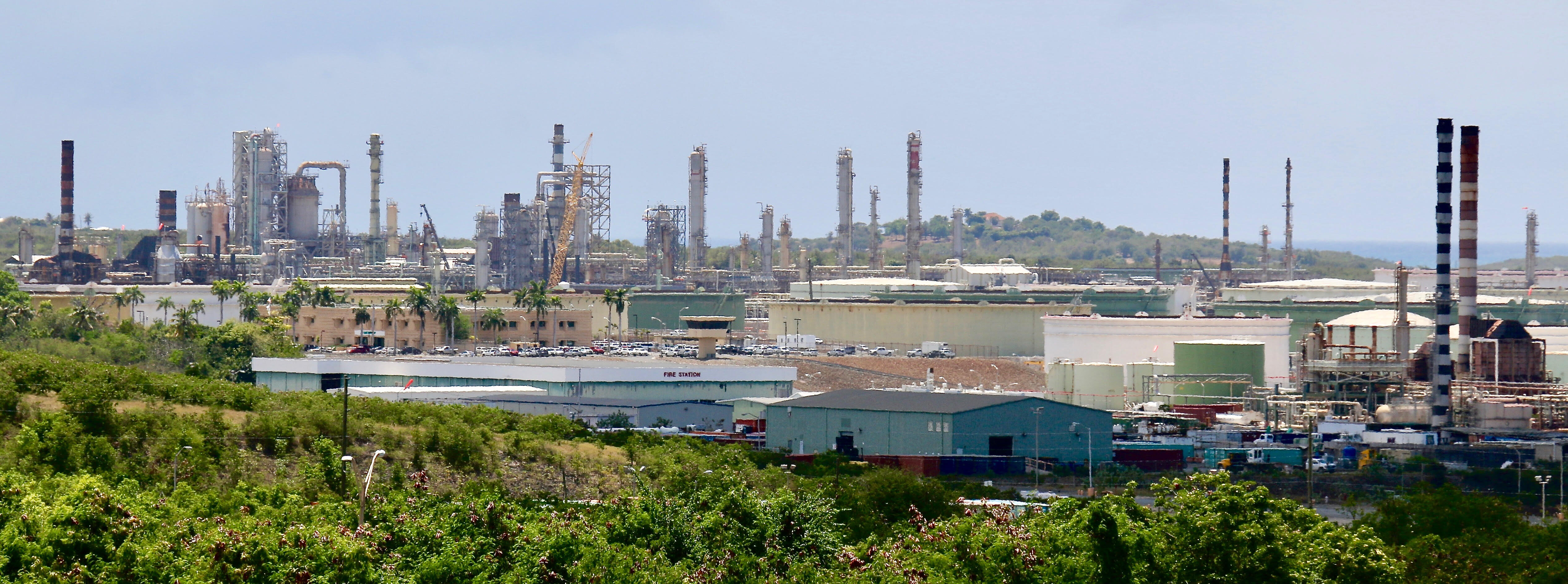
Port Hamilton Refining and Transportation said it may abandon plans to restart the St. Croix refinery if required to obtain a new permit under the federal Clean Air Act — a process it says could take three years and “threatens its very existence”— according to a brief filed with the Third Circuit Court of Appeals in Philadelphia.
Port Hamilton, which purchased the refinery for $62 million at a bankruptcy auction in 2021, in January petitioned the appeals court to review the Environmental Protection Agency’s finding that it requires a Prevention of Significant Deterioration permit to resume operations.
The case is scheduled for disposition before the panel that is sitting on St. Croix the week of May 22, according to the court docket.
“EPA’s conclusion that the St. Croix Refinery must go through a PSD permit process before it can resume operations has immediate, concrete, and costly consequences for Port Hamilton,” according to the company’s brief to the court.
“To comply with EPA’s PSD regulations, Port Hamilton must, inter alia, delay the resumption of refinery operations for two to three years, model its potential future emissions, assess the ‘Best Available Control Technology’ for each of the units to return to operating status, and install such controls prior to resumption of operations,” according to the brief.
If the EPA decision stands, Port Hamilton will have to wait until 2026 or 2027 before resuming operations, it said. “The prospect of this kind of delay, coupled with the uncertainty that is inherent in the outcome of any PSD permitting process, jeopardizes Port Hamilton’s plan to operate the refinery and threatens its very existence.”
The extended schedule also adds substantial costs to the process of resuming operations, rendering it uneconomic to pursue, according to the brief.
“If operation of the refinery is delayed for a period of years, Port Hamilton may have to abandon its plans and instead shut down and dismantle the refinery, with devastating consequences for the local economy, including the elimination of jobs and tax revenue that otherwise would be generated by a resumption of operations,” the brief states.
Port Hamilton purchased the refinery in December 2021 believing it could operate under the permits of its predecessor, Limetree Bay Refining, according to the brief. Those permits were issued under the administration of former President Donald Trump, which considered the refinery’s restart the reactivation of an idled facility — the plant had been shuttered by previous owner Hovensa since 2012 — rather than a new source.
What followed was a series of disastrous restart attempts that rained toxic pollution over neighboring homes. As a result, the EPA ordered Limetree shut down for 60 days in May 2021, and the company filed for bankruptcy that July.
In November, the EPA determined that new owner Port Hamilton must obtain a new PSD permit under the Clean Air Act.
“Based on EPA’s analysis … we conclude that the Refinery was permanently shut down in 2012 and that restarting the Refinery qualifies as construction of a new major stationary source under the federal PSD permitting regulations applicable in the U.S. Virgin Islands,” according to EPA’s letter to Port Hamilton.
That determination followed an inspection in the summer of 2022 during which federal regulators reported multiple serious safety issues at the refinery.
Maintenance and internal inspection issues at the plant could result in the release of toxic materials, the EPA reported. Valves and piping in containers of anhydrous ammonia — which can cause severe respiratory injuries — “are in an advanced state of corrosion and disrepair,” according to the EPA’s report. “These conditions demonstrate a risk of catastrophic release of anhydrous ammonia and off-facility impact.”
Exposed wires at the petroleum refinery could spark a fire, the EPA said, as there are multiple pipes and valves in disrepair. Some oil pipes leaked during the agency’s inspection in late September. “Because of this degree of corrosion, the vessels, piping, and/or valves may fail, resulting in a catastrophic release,” according to the report.
A fire at the refinery broke out in August in a pile of coke in the North Coke Dome. Port Hamilton quickly declared the blaze under control but the EPA said it burned for approximately two weeks. It was extinguished by 11 mainland contractors and 43 local contractors.
The St. Croix Environmental Association, the Sierra Club and the Center for Biological Diversity have filed an amici curiae — or “friend of the court”— brief in the case, offering their information about the refinery operations in support of the EPA decision.
Meanwhile, an EPA-mandated removal of dangerous chemicals from the refinery — including 253,000 gallons of rich amine solution, 37,000 gallons of liquid petroleum gas, and 8,500 gallons of anhydrous ammonia — got underway as planned this week and is expected to take two months.
Port Hamilton, in its brief to the court, said the refinery is “at a crossroads.”
“If the refinery is able to resume operations as EPA repeatedly agreed it could in the past, the St. Croix Refinery will bring back additional workers to assist in the resumption of refinery operations as expeditiously as possible, subject to the safety and environmental requirements of its operating permit recently re-issued by the Virgin Islands Department of Planning and Natural Resources,” according to the brief.
“If the 2022 Determination blocks Port Hamilton from resuming operations, however, the St. Croix Refinery will, at best, remain idle for years or, at worst, commence the closure and dismantling of this important energy provider and economic engine. The fate of the St. Croix Refinery depends entirely upon access to, and the outcome of, judicial review of the 2022 Determination,” it said.


